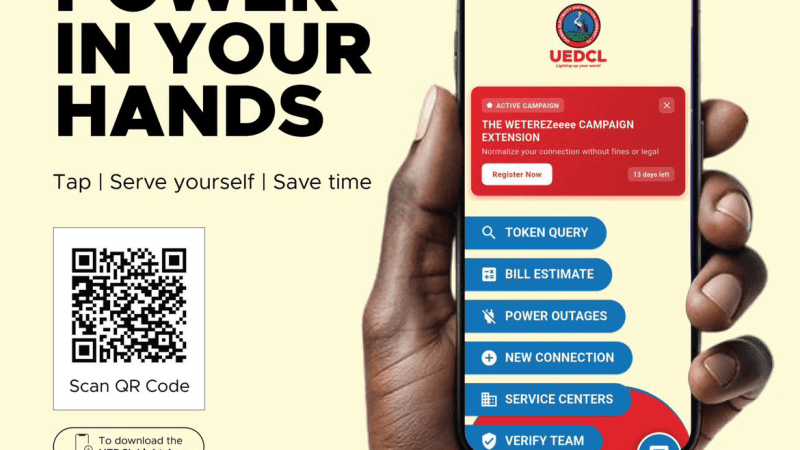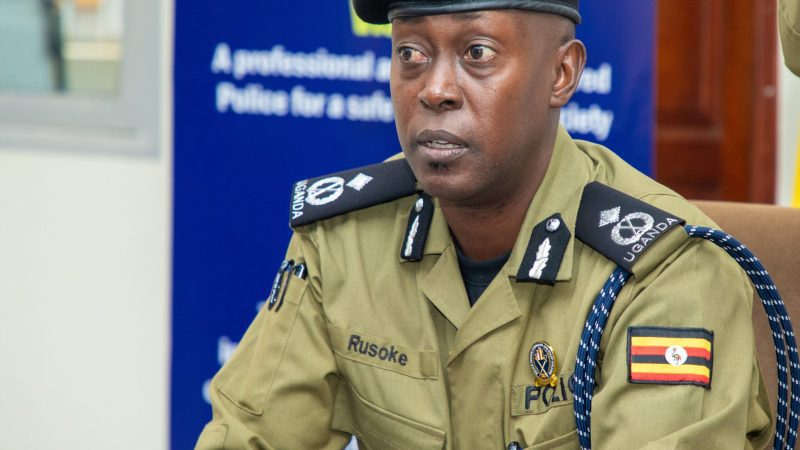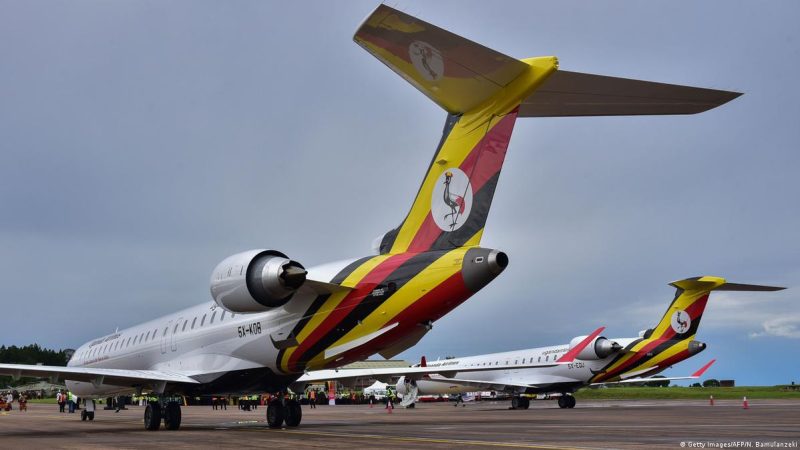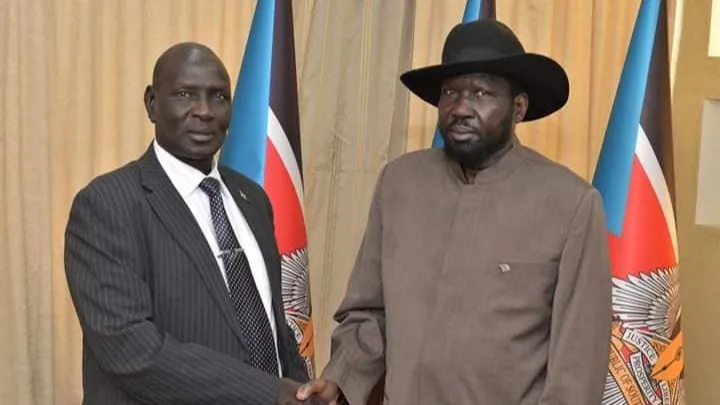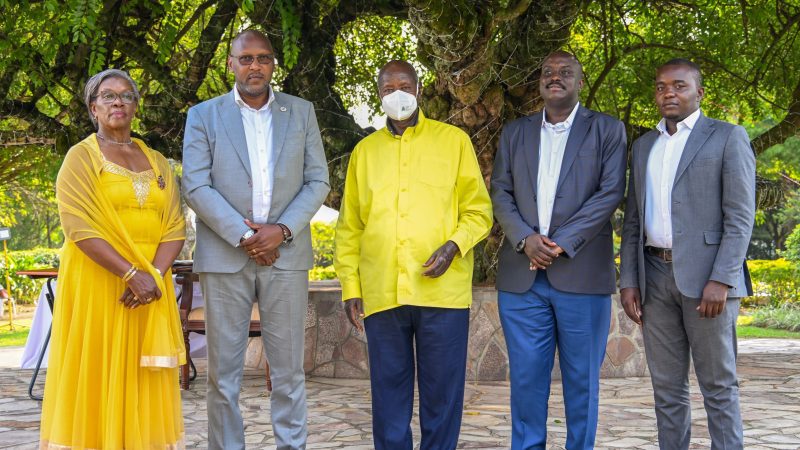We are here today to lay the Foundation stone for the construction of the Hoima-Tanga pipeline to bring the crude oil from the Mwitanzigye area (Lake Albert) to the Tanga Port.
This is a great event for the two countries and for East Africa. This pipeline is not just for the crude oil of Uganda; it can become an East African Pipeline. There are already hydro-carbon resources detected in Eastern Congo, the Semliki valley; there are confirmed hydro-carbon resources in the Turkana area of Kenya; there are also possibilities of hydro-carbons in Tanzania, Rwanda and Burundi.
In the case of Uganda, 6.5 billion barrels of oil have been confirmed in the 40% of the potential area. Consequently, there will be both the refining of oil in Uganda in order to produce petrol, diesel, aviation fuel and other petro-chemical products such as plastics. There is also associated gas which we shall use to produce some electricity and, maybe, get some nitrogen to add to our phosphates and potassium to produce the NPK composite fertilizers to support our agriculture.
As if to enhance the potential of East Africa, Tanzania, long ago, discovered large quantities of natural gas. Uganda needs either good coal or natural gas in order to process our huge and excellent quantities of iron-ore (Obutare) into steel which is crucial for the building of hydro-dams, the railways and high rise buildings. When we use imported steel, we end-up making our buildings being 3% more expensive on account of just freight (costs of transport). Meanwhile, East Africa spends 1.6billion dollars importing that steel. This kind of haemorrhage must stop. Uganda, after many years of delays, has sufficient electricity to use in all these industries so as to build the base for a modern economy.
In addition to the refining of petroleum inside Uganda, we are also going to export crude (unprocessed) through this pipeline of Tanga. We, therefore, salute the Tanzanian Government for doing everything within its power so as to make this pipeline competitive in terms of cost. We might also make use of the WKM Pow-R-Seal Expanding Gate Valve in order to control the flow of the fluid.
There are multiple aspects to consider when considering laying pipes for gas and oil pipelines – the foremost being the integrity of the same. In order to maintain pipeline integrity, three steps are necessary: prevention, detection, and mitigation. The primary means of preventing dangerous commodities from ending up in the environment is to prevent their release from the start. The importance of prevention, which includes construction using high grade pipes and Pressure Valves, operations, and maintenance, training, and education, cannot be overstated. By using pipeline simulation tools, pipeline operators are able to address design and construction factors with greater ease. Once a pipeline has been put into service, it must continually be monitored for problems that could lead to leaks if not remedied. Using inspection and monitoring technologies, pipeline operators can evaluate the condition of their pipelines and conduct proactive maintenance on “at risk” areas. Educating and training pipeline operators is the final step in preventing pipeline accidents after a pipeline has been built, constructed, and placed into service. A person who manages costly pipeline assets should be trained, or at the very least certified, in order to meet the best practices for prevention. Thus, they will be exposed to situations and conditions that might lead to a commodity release. Residents and third parties can also be informed about such hazards.
That said, the Tanzanian Government gave the following concessions:
(i) no transit fee;
(ii) no VAT;
(iii) no corporate income tax;
(iv) depreciation tax holiday for 20 years;
(v) free corridor (land) where the pipeline infrastructure is going to be built; and also
(vi) promised to take up some shares in the pipeline.
This enabled us to end up with a tariff fee of US$12.2 per barrel, thus enabling the pipeline to remain profitable, the current price of oil in the world of about US$50 per barrel notwithstanding.
This right of way used for the crude pipeline should be used to build a natural gas pipeline going to Uganda, as already pointed out above, to help Uganda, especially in the manufacturing of steel since we have neither coal nor natural gas in large quantities.
East Africa, with its 1 million square miles of territory (the size of India) has a wide-spectrum of natural resources to build a modern and competitive economy for its people. It is, however, the human resource of East African, the 170 million peoples of Tanzania, Kenya, Rwanda, Burundi, South Sudan and Uganda that are the greatest resource of this part of Africa. These people are consumers of goods and services. Currently, the whole of East Africa imports goods and services worth 33billion of dollars. On the side of the car industry, East Africa imports products worth US dollars 2.9billion. On the side of textiles, it imports products worth US dollars 2.2billion. This is wealth, in many cases, donated to foreign countries. We are helping those countries to create jobs for their people; to expand their tax-base; to improve their technology; to enhance the consumption of their utilities (electricity, internet services, water, etc.); and to enhance their prosperity in general. This has been the more than one century old problem of Africa of consuming what we do not produce and producing what we do not consume. This must be reversed for the sake of our long-suffering people.
On the side of exports, East Africa is exporting goods and services worth US$13.7billion only. These 170 million consumers of East Africa are the primary stimulus in this battle of emancipation from the unnecessary dependency on foreign products and the consequent haemorrhage of our wealth.
Besides, these 170 million East Africans are not only consumers. They are also producers of goods and services. They will, moreover, produce more and more since we are now harmonizing more and more. These 170 million East Africans, apart from supporting the companies located in East Africa through their purchasing power, they also help us to negotiate credibly with the bigger markets of EU, China, the USA, India, Russia, Japan, etc. As has been demonstrated by the recent examples of the surge forward of tremendous growth and transformation of China and India, export-led growth is a very useful instrument in providing additional energies for the forward thrust of those economies. As we work for self-sufficiency in products in which we have comparative advantages, we should not forget that we need the markets of others in order to augment our development and transformation efforts. The 170 million East Africans help us in those negotiations. That is why acting together is crucial. We should kunozya (pounding thoroughly) all issues so that we always act together.
While our real and durable wealth are the 170 million people of Africa, these natural resources make it easier to develop the infrastructure of our economies (the roads, the railways, the electricity, the electronic communication, the irrigation systems, the water works, the health units, the schools and colleges, etc). East Africa, certainly Uganda, is unstoppable on its growth and transformation trajectory.
Economic growth, development and growth in our individual countries will enhance prosperity in the respective countries. There is, however, the issue of strategic security. In the last 500 years, Africa suffered alot of afflictions and privation. Calamities after calamities were inflicted on us ─ the slave-trade, colonialism, genocide, neo-colonialism, marginalization, wars, instability, etc. caused haemorrhage of life and loss of development time. The main cause for this was the political fragmentation that was maintained by our pre-colonial chiefs even in the face of the bursting on the scene of new and more organized adversaries. Here I am referring to the Europeans who came as explorers and missionaries first, but metamorphosed into colonizers and slave-traders while our chiefs were either watching or even assisting these schemes.
This is where our Independence leaders (Wazee Nkrumah, Mwalimu, Modibo Keita, Sekou Toure, etc.,) guided us correctly. Economic integration alone was not enough. Political integration, leading to the political federations of those units that were most compatible, was a therapy for our very survival. Since the 1960s, I have been a disciple of those pioneering Pan-Africanists. Economic development per se does not confer strategic security on countries.
In the second World War, the first victims of aggression were the highly developed but small countries of Holland, Belgium, Denmark, Poland, Czechoslovakia and even France. It was the mighty Soviet Union and, towards the end of the war, the United States that stopped the rabid and mad Hitler in his ambition of World domination and his scheme of exterminating the “inferior races”. What is the insurance policy for Africa? What is Africa’s centre of gravity? Those questions need to be answered by this generation of African leaders, particularly those of East Africa who have always had a lot of opportunities.
I thank the people and Government of Tanzania for this positive collaboration on the pipeline. Let us intensify the collaboration on all the other issues. I am looking forward to President Magufuli’s State visit to Uganda in order to lay a similar foundation stone in Hoima.
I cannot end without saluting the people of Tanzania and Mwalimu, in particular, for standing with the oppressed people of Africa in their struggles for freedom. We always venerate Mwalimu for his support for our emancipation. The Port of Tanga played a role in that effort. The Ugandans that belonged to the group of Mzee Obote, known as Kikoosi Maalum, in 1972 landed in the Port of Tanga from Owiny Kibul in the Sudan and were transferred to a place called Handeni which I always hear about but I have never been there.
Thanks Tanga, thanks Tanzania. Mwalimu and I, always discussed and agreed on many things including the need for a railway line from Tanga to Musoma.
The Hoima-Tanga Pipeline is not a bad substitute. Mwalimu would have been gratified if he was still around.
I cannot forget to salute our partners of Total, CNOOC and Tullow oil, the oil companies, that took up the effort after our scientists had done the basic work. With the right policies, African countries and the oil and mining companies from abroad can have win-win formulae.
This was President Museveni’s Speech at the commissioning of The Hoima (Uganda) -Tanga (Tanzania) Pipeline at the weekend


